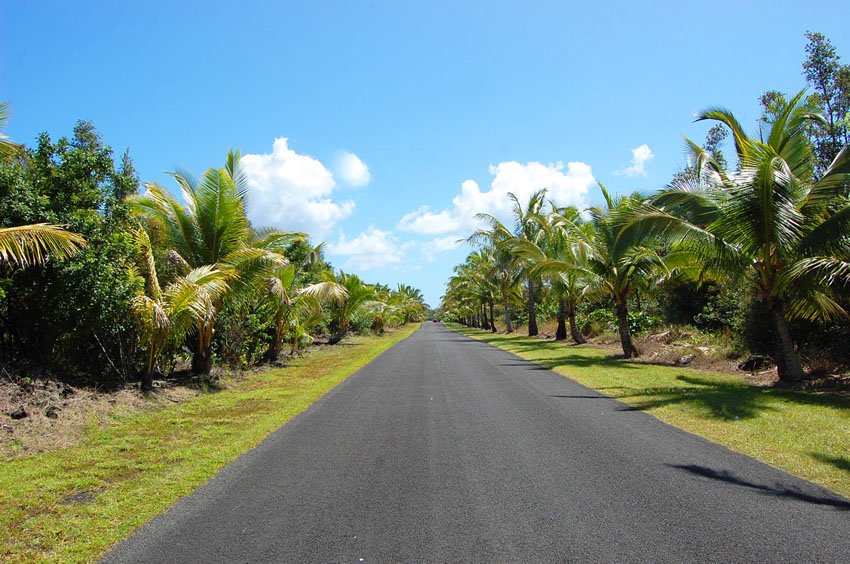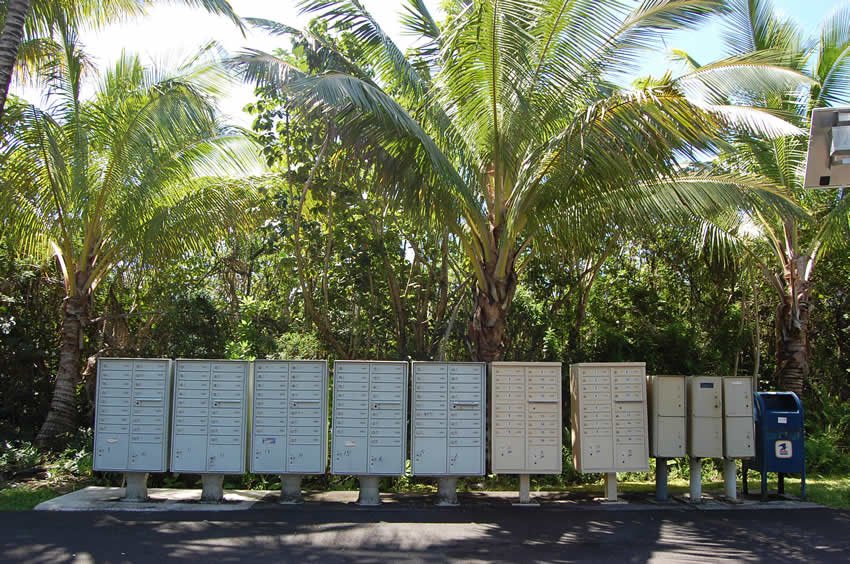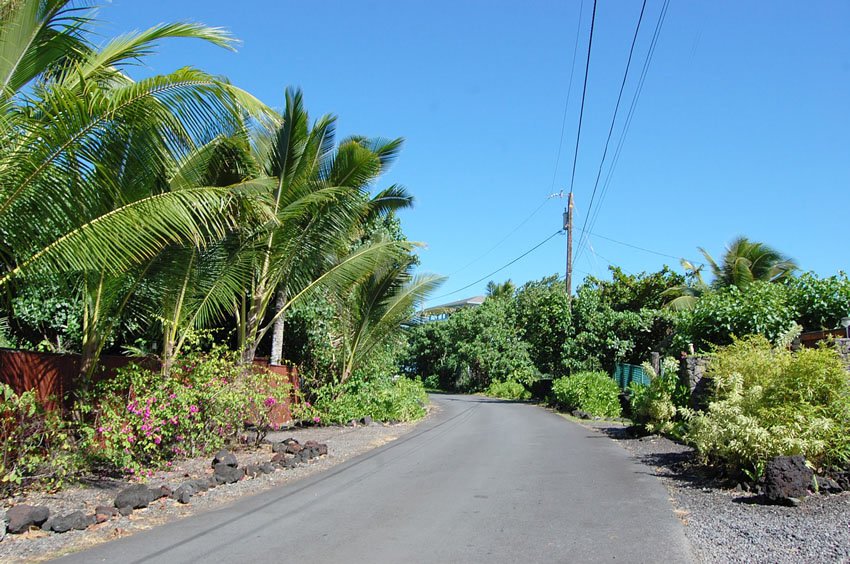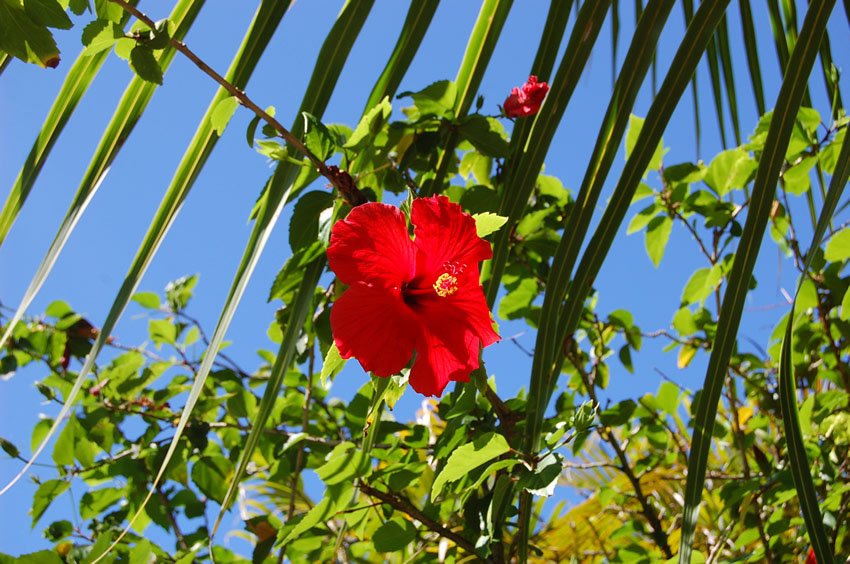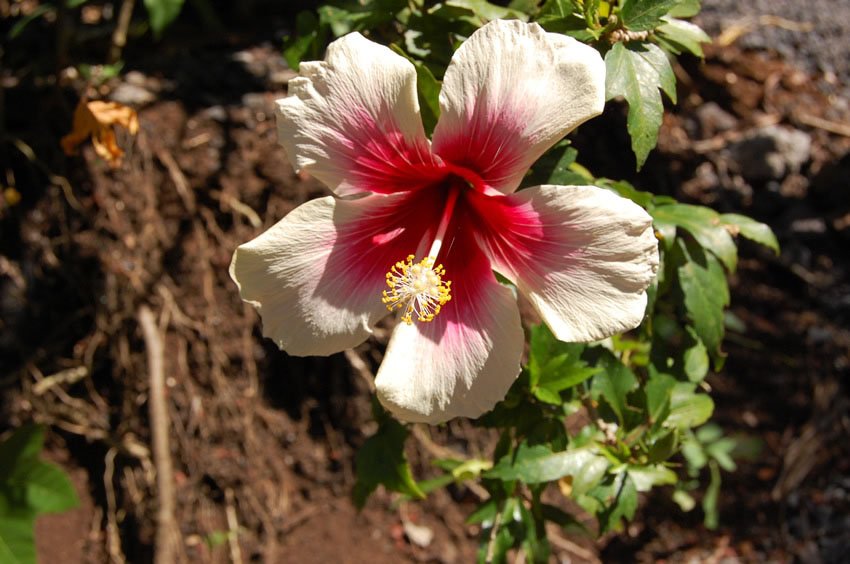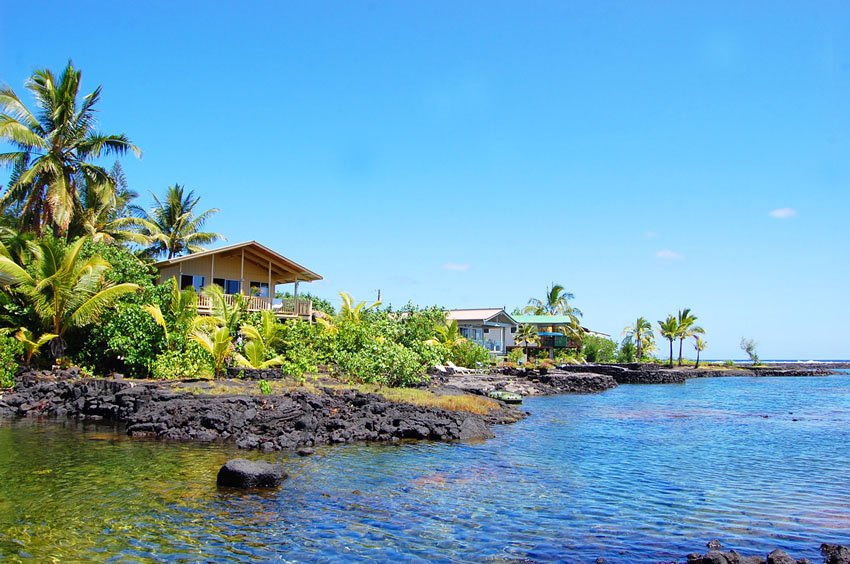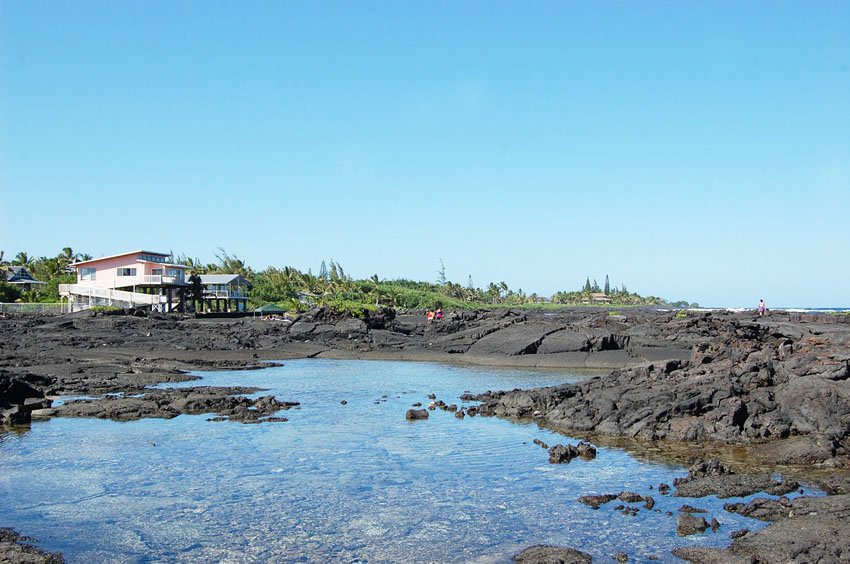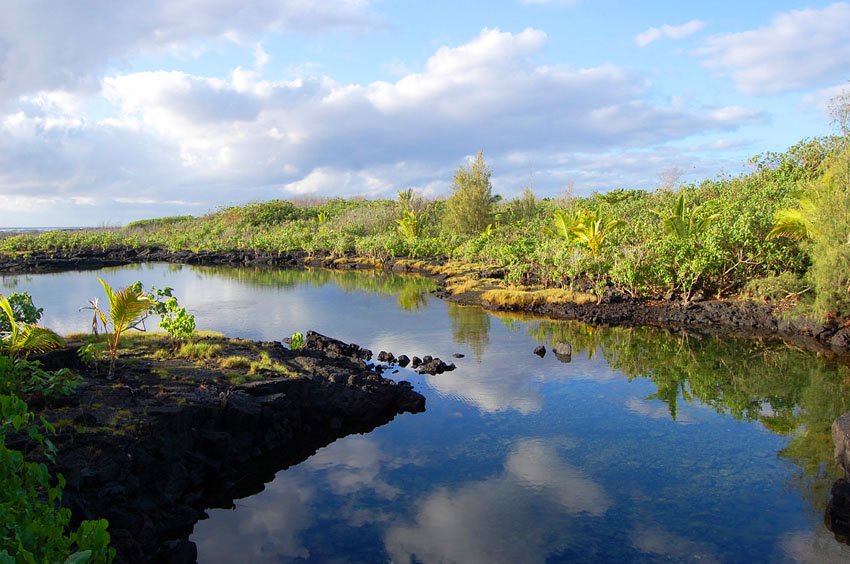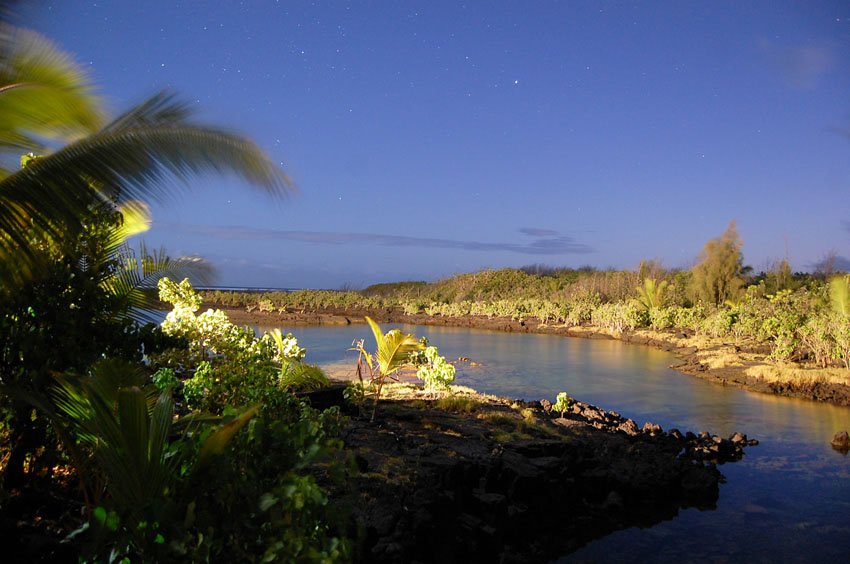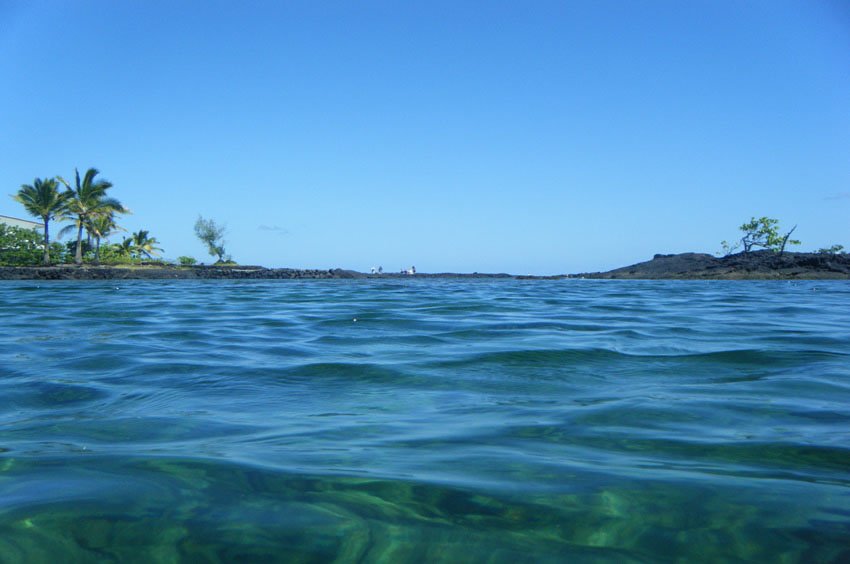Kapoho
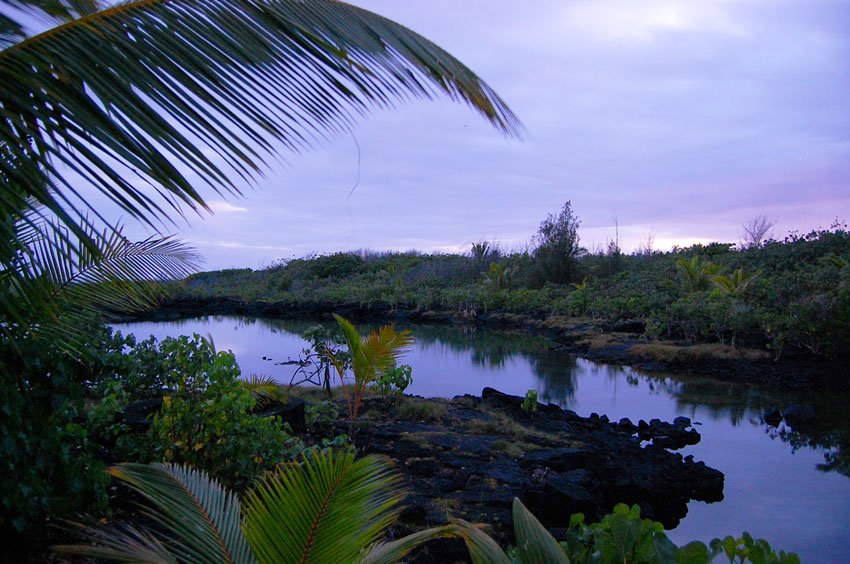
Kapoho was once a sunny, coastal village in the Big Island's Puna District, famous for its geothermally heated tide pools, Champagne Pond, and lush surroundings. Though destroyed by lava flows in 1960 and again in 2018, Kapoho remains remembered for its natural beauty and tranquil, oceanfront charm.
Kapoho, Big Island
Editor's Note: Due to a recent lava flow that occured on June 5, 2018, this beautiful destination was unfortunately destroyed. We are leaving this page up for all of us who have made memories here and would like to remember it as it used to be.
Kapoho has the distinction of being the sunniest spot in the eastern side of the Big Island, which is why it is often referred to as "Sunny Kapoho." The area is also a snorkeler's delight. It may have no white-sand beaches, yet its coastline boasts numerous tide pools and lagoons rich with marine life.
At Kapoho Bay, there's Champagne Pond, a tide pool with geothermally heated freshwater. This ocean-fed inlet is also called Turtle Pond because sea turtles like to hang out here. However, it has suffered from overuse in the past, which has created sanitation problems. An alternative volcanically heated tide pool is located at nearby Ahalanui Beach Park.
Nearby is Green Lake and Green Mountain, one of the most scenic spots in Hawaii. Surrounded by rainforest, the spring-fed Green Lake is one of only two natural freshwater lakes on the Big Island. Green Mountain, the crater that holds the lake, is 400 years old.
Despite its idyllic beauty, however, Kapoho is a ghost town. In the past, Kapoho was an agricultural community with schools, churches and homes. The town was destroyed by a lava flow when Kilauea erupted in 1960. When the lava approached the ocean at Cape Kumukahi, it parted and spared the lighthouse that stands there. It's the only building that wasn’t buried under molten rock. Kapoho was never resettled.
Kapoho Bay is only accessible with a four-wheel drive vehicle. If you have a regular car, you'll have to walk a little over a mile to reach the bay. A little further south is the area called Kapoho Tide Pools. Vacation rentals are available here (called Vacationland). Next door is a gated community called Kapoho Beach Lots.
Key Features of Kapoho
- Destroyed by lava flows: The 1960 and 2018 Kilauea eruptions wiped out most of the town
- Champagne Pond: A tide pool known for geothermally heated freshwater and sea turtle sightings
- Kapoho Tide Pools: A network of volcanically heated and ocean-fed tide pools ideal for snorkeling
- Cape Kumukahi Lighthouse: The only structure spared in the 1960 eruption, standing as a symbol of resilience
- Green Lake & Green Mountain: Once a scenic volcanic crater lake and rainforest destination
- Former Vacationland community: Known for oceanfront vacation rentals and access to natural tide pools
Frequently Asked Questions
Is Kapoho still accessible after the 2018 lava flow?
No, Kapoho was covered by lava in the 2018 Kilauea eruption and is no longer accessible. Roads were destroyed, and the entire area has been transformed by hardened lava fields.
What was the Champagne Pond?
Champagne Pond was a popular tide pool known for warm geothermally heated water and frequent sea turtle sightings. It was located in Vacationland Kapoho and is now buried under lava.
What remains at Cape Kumukahi today?
The Cape Kumukahi Lighthouse still stands and was famously spared by the 1960 lava flow. It's a historic landmark located near the easternmost point of the Big Island.
What was Green Lake and why was it unique?
Green Lake was the largest natural freshwater lake on the Big Island, located within Green Mountain crater. It was vaporized by lava in 2018 and no longer exists.


















